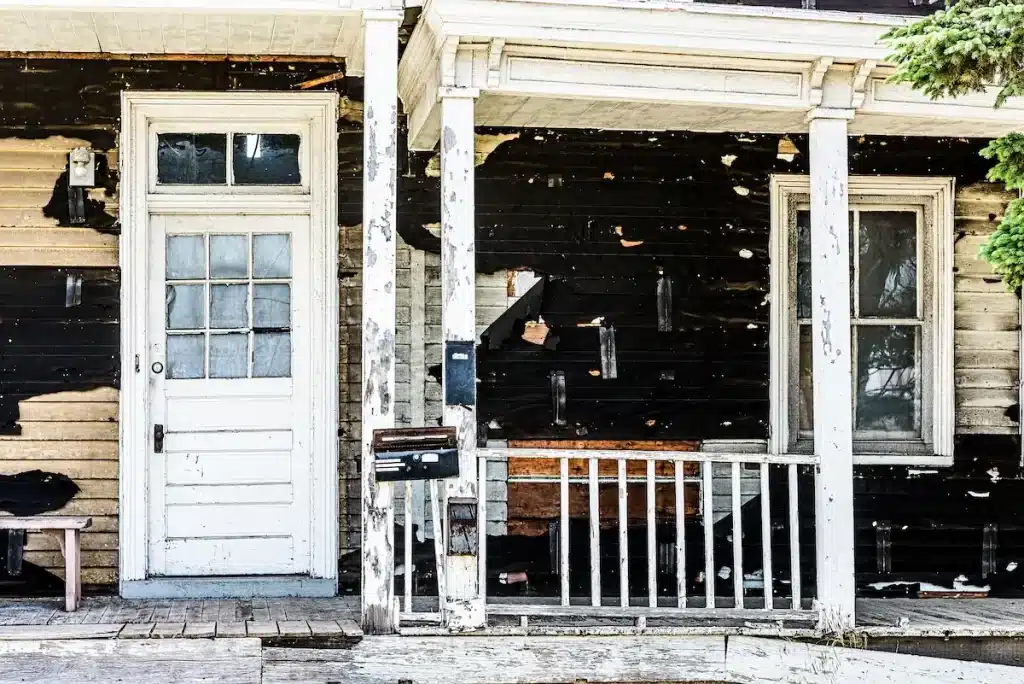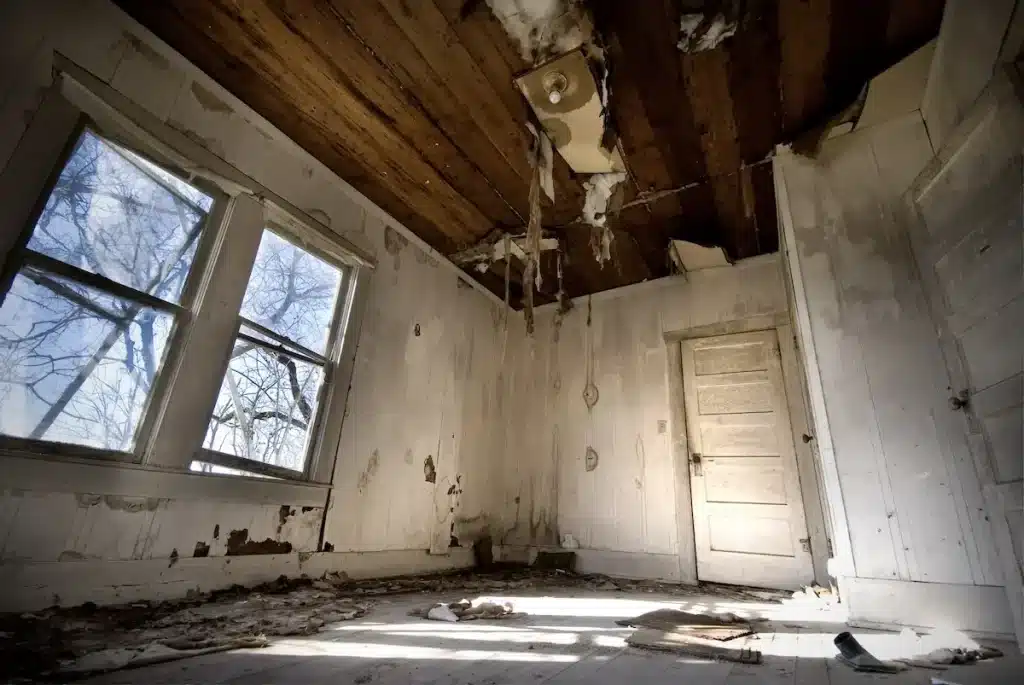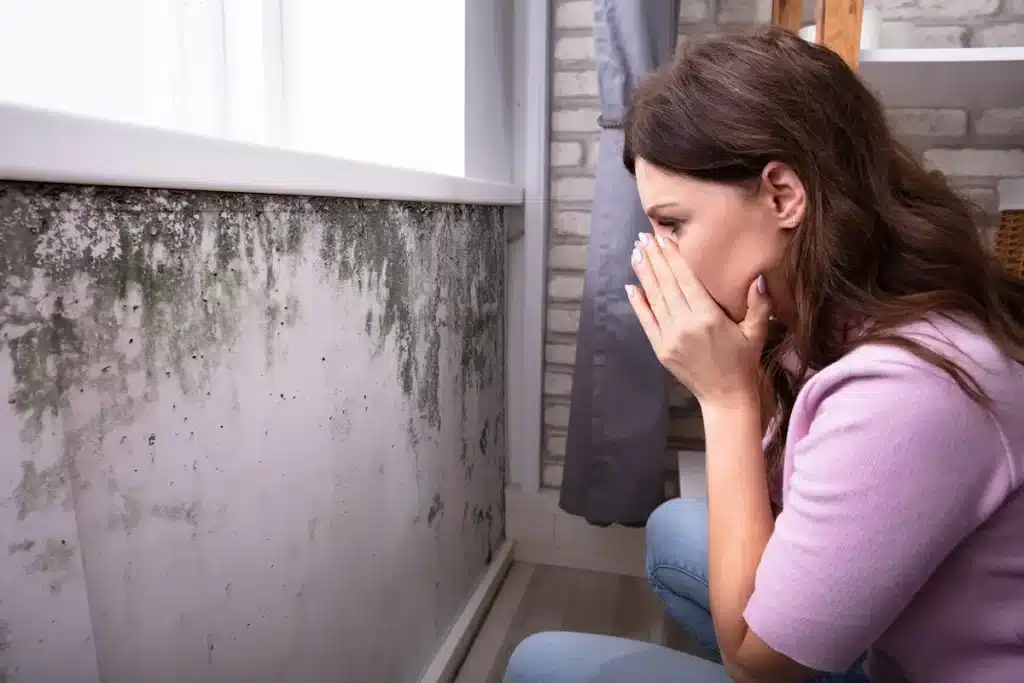Share this

When a home becomes unlivable, it creates stress and uncertainty for everyone involved. Whether you’re a homeowner or tenant in Tennessee, understanding your rights and options is crucial. Let’s explore what makes a house uninhabitable and what you can do about it.
A property becomes uninhabitable when it fails to meet local housing codes and health and safety standards, putting residents’ safety at risk. In Tennessee, state laws and local building codes set specific standards for habitable living conditions. These standards aren’t just guidelines – they’re legal requirements that protect residents’ safety and health. When a property falls below these standards, it can be deemed uninhabitable by local authorities.
The definition of uninhabitable goes beyond simple discomfort or minor maintenance issues. It refers to conditions that make a home genuinely unsafe or unhealthy for occupancy. This could include major structural problems, dangerous utility issues, or severe environmental hazards that pose immediate risks to occupants.
Unsafe living conditions can take many forms, and often multiple issues combine to make a property uninhabitable. A home with faulty electrical systems might pose immediate fire hazards, while broken windows and compromised entry points create security risks. Here are some of the most common examples of safety risks:
Local housing codes and regulations play a crucial role in determining whether a rental property is habitable or not. These codes and regulations vary by jurisdiction but generally cover essential aspects of a rental property, including:
Landlords are responsible for ensuring their rental properties comply with local housing codes and regulations. Failure to do so can result in legal action, fines, and penalties. Adhering to these codes not only protects tenants but also helps landlords avoid costly legal issues and maintain the value of their properties.

Living in such conditions poses serious risks to your tenant’s health and well being. These dangers include both immediate and long-term threats to physical and mental health.
The physical toll of living in uninhabitable conditions can be severe. Respiratory problems often develop from exposure to mold, dampness, and poor ventilation. These issues are particularly dangerous in extremely hot climates where proper air circulation is crucial. Residents might suffer injuries from unsafe conditions like broken steps or unstable flooring. Unsanitary conditions, often exacerbated by plumbing issues and broken toilets, can lead to various illnesses.
Some of the most common physical risks include:
The mental health impact shouldn’t be underestimated. Living in unlivable conditions creates constant stress and anxiety. Residents often worry about their safety and the financial implications of their situation. Depression can develop from feeling trapped in poor living conditions, while the uncertainty of housing stability adds another layer of mental strain. The combination of physical and mental health challenges can create a devastating cycle that’s difficult to break without addressing the underlying housing issues.
Some of the most common mental health impacts include:
It’s important to distinguish between a detrimental health and safety standard that could be deemed uninhabitable and something that just needs to be fixed. For example, a faucet dripping into the sink, while inconvenient, probably does not pose an immediate health risk. While a leak in the walls that has not been fixed for weeks poses a more significant risk.
Living in uninhabitable conditions can have severe long-term consequences for tenants, including:
Understanding these long-term consequences underscores the importance of addressing uninhabitable living conditions promptly and effectively.

When your house is deemed uninhabitable, it means you can’t legally live there anymore until problems are fixed. City officials will give you official paperwork explaining why your home isn’t safe, and they might turn off your water and electricity to prevent accidents. Your home insurance might not cover all your costs during this time, and your mortgage company could get worried because the house they lent you money for is now considered unsafe. This creates immediate pressure to find somewhere else to stay while figuring out next steps.
Getting your home back to a livable condition means working with city inspectors and following their instructions carefully. You’ll need to create a plan to fix everything they found wrong – whether it’s a damaged roof, dangerous mold, pest problems, broken plumbing, or unsafe wiring. You’ll have to pay for repairs and your temporary housing out of your own pocket, which can be tough financially. Many cities also charge daily fines until everything is fixed, so it’s important to address problems quickly before costs pile up even more.
When facing uninhabitable conditions, taking proper action is crucial. In some cases, tenants may consider withholding rent as a legal option when the property is uninhabitable. The process begins with thorough documentation of all issues. Residents should create detailed records, including photographs and written descriptions of every problem. This documentation becomes vital whether dealing with landlords, insurance companies, or legal authorities.
1. Document everything with photos and notes
2. Report problems to your landlord in writing
3. Contact local authorities if needed
4. Seek legal advice if problems persist
5. Consider rental assistance programs
6. Look into alternative accommodations if necessary
For those living in a rental unit, the first step is formally notifying the landlord in writing about the issues. This creates a paper trail and gives the landlord an opportunity to address the problems. If the response isn’t satisfactory, the next step involves contacting local authorities who can investigate and enforce housing codes. Landlords have legal obligations for maintaining properties and ensuring their rental properties remain habitable. They must:
Tennessee law provides specific protections for tenants living in uninhabitable conditions. When a property fails to meet basic habitability standards, tenants have the right to take action. This includes the right to withhold rent in certain circumstances, though this should only be done under proper legal guidance. Tenants can also pursue legal action against landlords who fail to maintain habitable conditions.
The law recognizes that a habitable living environment is more than just four walls and a roof. It includes functional utilities, proper safety features, and protection from environmental hazards. When these standards aren’t met, tenants have the right to seek help from relevant authorities and pursue remedies through the legal system.
Tenants have legal rights and protections when dealing with uninhabitable living conditions. These include:
Knowing and exercising these rights is crucial for tenants to protect themselves and ensure they live in a safe and habitable environment.
When conditions become uninhabitable, tenants may have grounds to terminate their lease without penalty. This right exists because the landlord has fundamentally breached the rental agreement by failing to maintain habitable conditions. In some cases, tenants might qualify for rent reduction while problems are being addressed.
The process of terminating a lease or seeking rent reduction should be handled carefully. Document all conditions thoroughly, provide proper notice, and consider seeking legal advice to ensure your rights are protected. In some cases, temporary housing may be necessary while the situation is resolved.
Dealing with an uninhabitable home can feel overwhelming, but numerous resources exist to help. Various organizations and government agencies provide assistance to both tenants and homeowners facing these challenges.
Local government agencies play a crucial role in addressing uninhabitable housing conditions. Housing authorities can conduct inspections, enforce codes, and help residents understand their rights. Health departments may become involved when conditions pose public health risks. These agencies can often provide guidance on available resources and next steps.
Building departments handle code violations and can help ensure properties meet basic safety standards. They can issue citations to property owners who fail to maintain their buildings and may have the authority to condemn properties that pose immediate dangers.
Many community organizations provide support for those dealing with uninhabitable housing. Legal aid services can offer guidance on rights and options. Housing advocacy groups may help navigate the system and find resources. Emergency assistance programs might provide help with temporary housing or relocation costs.
These organizations often understand local housing challenges and can connect residents with additional resources. They may also help homeowners facing difficulties with maintaining their properties or dealing with code violations.
We buy houses in Knoxville, and the entire Tennessee state. Fill out the form below or call us at (865) 999-0025 for your FREE cash offer!
For Tennessee homeowners dealing with an uninhabitable house, selling might be the best solution. However, traditional selling methods often present significant challenges when a property has serious problems.
While you could try to fix problems yourself or list with a realtor, these approaches often lead to:
At Nexus Homebuyers, we offer a simpler path forward. As Knoxville’s trusted cash home buyer, we:
Even if your home has significant structural damage, you can avoid the necessary repairs and sell your unlivable house to us. We are not afraid of such issues and can buy your home.
Tennessee law requires sellers to disclose known issues with their properties. This includes problems that affect habitability, such as structural issues, code violations, or environmental hazards. Working with Nexus Homebuyers simplifies this process because we purchase properties as-is, with full awareness of their condition.
Our experience with distressed properties means we understand the challenges involved and can handle the complexities of these transactions. We take properties in any condition, managing all aspects of the sale without requiring extensive documentation or repairs.
To prove uninhabitable living conditions, you’ll need to gather substantial evidence that demonstrates how the property violates the implied warranty of habitability.
When your home becomes unlivable, your mortgage situation can become complicated and may lead to legal complications. Your homeowner’s insurance may cover temporary housing while repairs are made, but you’ll still need to pay rent or mortgage payments even if you can’t live in the property. Many mortgage contracts include clauses requiring the home to remain structurally sound, and failing to meet these requirements can trigger defaults.
You might need to work with your lender to discuss options like forbearance if you’re struggling with payments. Many homeowners facing these challenges choose to work with a cash buyer like Nexus Homebuyers to quickly exit the situation and avoid ongoing financial burdens. This is especially true when the cost of restoring essential services like air conditioning and addressing hazardous materials exceeds the property’s value.
A rental property or private home can become uninhabitable through various circumstances that violate local laws and safety standards. Natural disasters can instantly make a home unlivable, while long-term neglect of essential services can gradually deteriorate a property’s condition. Structural failures, severe pest infestations, and major utility system failures can all compromise a home’s safety. The presence of hazardous materials like asbestos or lead paint can create dangerous living conditions, requiring intervention from the local health department.
Sometimes, rental properties become uninhabitable due to landlords failing to maintain basic standards required by state laws. This might include problems with hot water systems, inadequate sanitation, or non-functioning air conditioning in climate-sensitive regions. Criminal activity can also leave behind hazardous residues that make a property unsafe for occupancy.
While both situations involve problematic living conditions, they have distinct implications under local laws. When rental properties are deemed uninhabitable, they’re unsafe for occupancy but may be fixable if the landlord addresses essential services and safety issues. Property owners typically maintain access and can take legal action to remedy the situation.
In contrast, when local housing authority officials condemn a property, it represents a more severe legal designation. Condemned properties must be vacated immediately due to extreme safety hazards or inadequate sanitation. These properties often require extensive rehabilitation to become structurally sound again, and owners may face significant legal complications in resolving the situation.
Securing traditional financing for a home uninhabitable due to major defects presents significant challenges. Most lenders require properties to meet basic standards for essential services and safety before approving loans. The presence of hazardous materials or inadequate sanitation can immediately disqualify a property from conventional financing.
While renovation loans might seem like a solution for rental properties or private homes needing rehabilitation, they often involve complex requirements and higher costs. This is why many buyers and sellers of properties with uninhabitable living conditions choose to work with cash buyers like Nexus Homebuyers, who can provide straightforward solutions without the obstacles of traditional financing.
Tennessee’s habitability law establishes clear requirements for landlords to maintain safe and livable properties. Landlords must maintain all structural elements of the building and provide functioning plumbing and electrical systems. The law requires adequate heating and ventilation systems to be in place and working properly.
Landlords are responsible for keeping common areas safe and clean, and must address pest infestations when they occur. They must comply with all local building and health codes, make necessary repairs within a reasonable timeframe, and ensure working smoke detectors are installed and maintained. These requirements form the basic standards for rental properties in Tennessee and provide protections for tenants’ rights to safe housing.
FEMA maintains specific criteria for determining when a home is considered uninhabitable in the context of disaster response and recovery. According to FEMA, a home is uninhabitable when it’s not safe to occupy due to damage or hazardous conditions. This includes situations where essential living areas are compromised or when the residence poses immediate health risks to occupants. Structural damage that makes occupancy dangerous, or situations where essential utilities cannot be restored quickly, also qualify under FEMA’s definition. The presence of environmental hazards that make the property unsafe for occupancy is another key factor. Additionally, FEMA often considers a property uninhabitable if the cost of repairs exceeds 50% of the home’s value, as this threshold typically triggers additional requirements for rebuilding and mitigation.
Dealing with an uninhabitable home is challenging, but you have options. Whether you’re a tenant seeking help or a homeowner looking to sell, understanding your rights and available resources is crucial.
For homeowners, Nexus Homebuyers offers a straightforward solution to sell your property quickly, regardless of its condition. Don’t let an uninhabitable property continue causing stress and financial drain. Contact Nexus Homebuyers today for a fair cash offer and experience how easy selling your house can be.
Remember, you don’t have to navigate these challenges alone. Let Nexus Homebuyers help you move forward to a better situation, without the hassle of repairs, real estate agents, or lengthy selling processes.
We buy houses in Tennessee and have helped hundreds of homeowners to sell their homes all over Knox County, Blount County, Anderson County, Knoxville, Maryville, Oak Ridge, Farragut, and East Tennessee.
Sell Your Home
Resources
Contacts us
Copyright © 2025 Nexus Homebuyers